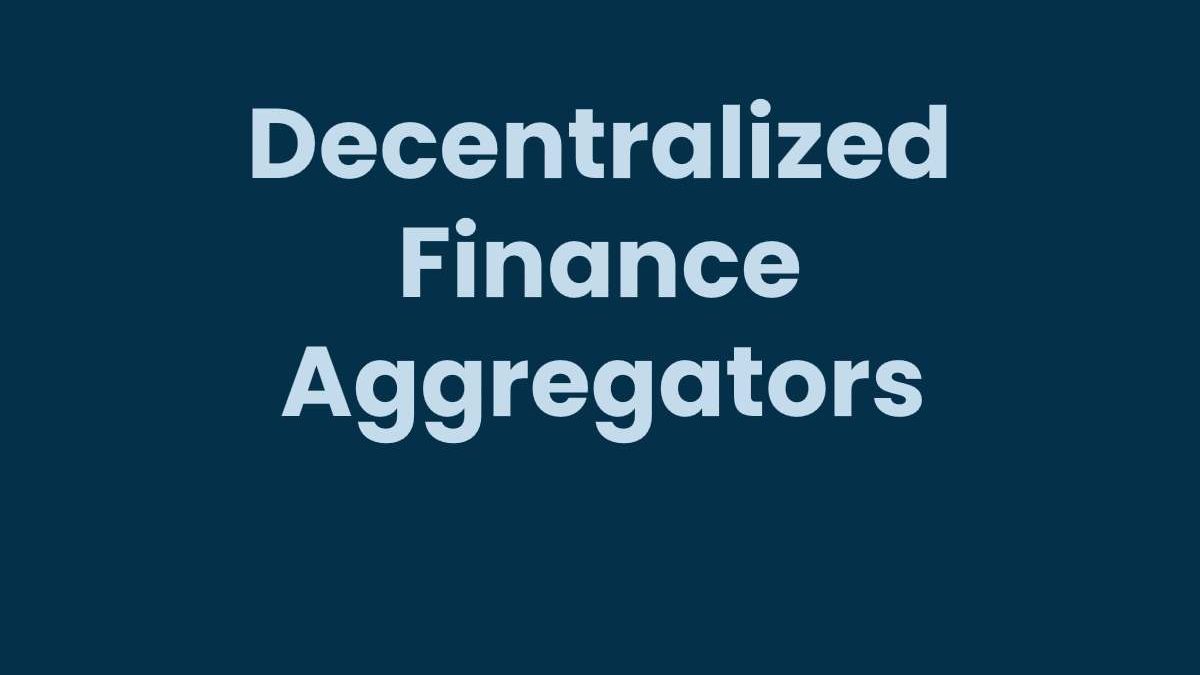Table of Contents
Introduction
The rapid expansion of Decentralized Finance (DeFi) has introduced countless opportunities for traders and investors looking to maximize their earnings. However, the sheer number of DeFi platforms, liquidity pools, and yield farming protocols can be overwhelming. DeFi aggregators solve this problem by streamlining and optimizing access to multiple protocols through a single interface.
DeFi aggregators enhance efficiency, reduce costs, and increase profitability by automatically finding the best trading rates, liquidity sources, and yield farming opportunities across different DeFi platforms. They have become an essential tool for both novice and experienced crypto investors aiming to optimize their strategies without manually navigating multiple protocols.
This article explores how DeFi aggregators work, their benefits, key players in the industry, risks, and how they are shaping the future of decentralized finance.
What Are DeFi Aggregators?
Definition
DeFi aggregators are platforms that connect multiple decentralized exchanges (DEXs), lending protocols, and yield farming services into a single dashboard. By doing so, they provide users with the most efficient and cost-effective options for trading, staking, and lending cryptocurrencies.
How DeFi Aggregators Work
✔ Liquidity Optimization – Aggregators scan liquidity pools to find the best prices and lowest slippage for token swaps.
✔ Yield Farming Automation – They analyze DeFi protocols to identify the highest return opportunities for staking and yield farming.
✔ Gas Fee Reduction – By bundling transactions and routing trades through optimal paths, aggregators minimize Ethereum gas fees.
✔ Cross-Chain Integration – Some DeFi aggregators allow seamless multi-chain trading across Ethereum, Binance Smart Chain, Polygon, and others.
Key Benefits of Using DeFi Aggregators
1. Best Trading Prices & Low Slippage
✔ Aggregators compare token swap rates across multiple DEXs to ensure traders get the best execution prices.
2. Maximized Yield Returns
✔ Instead of manually searching for the best yield farming pools, users can automate the process with aggregators that continuously rebalance funds.
3. Lower Gas Fees
✔ Aggregators use optimized routing algorithms to reduce transaction costs and avoid unnecessary fees.
4. User-Friendly Interfaces
✔ Many DeFi aggregators simplify complex DeFi interactions, making them accessible to both beginners and advanced traders.
5. Risk Diversification
✔ Investors can spread assets across multiple DeFi protocols, reducing exposure to platform failures or smart contract vulnerabilities.
Example:
Platforms like Immediate Mentax provide users with aggregated trading tools and investment strategies across multiple DeFi ecosystems.
Top DeFi Aggregator Platforms
1. 1inch Exchange
✔ Routes token swaps across multiple DEXs to provide the lowest fees and best exchange rates.
2. Yearn Finance
✔ Automates yield farming by finding the highest-yielding DeFi opportunities for investors.
3. Matcha
✔ A trading aggregator that scans decentralized exchanges for optimal prices and liquidity sources.
4. Zapper
✔ Simplifies DeFi investing by managing staking, lending, and borrowing from one dashboard.
5. DeFi Saver
✔ Offers automation for portfolio rebalancing and liquidation protection in DeFi lending markets.
Risks and Challenges of DeFi Aggregators
1. Smart Contract Vulnerabilities
✔ Aggregators rely on automated smart contracts, which may have exploitable security risks.
2. Protocol Dependence
✔ If a connected DeFi protocol fails or gets hacked, users may lose funds aggregated across multiple platforms.
3. Regulatory Uncertainty
✔ DeFi aggregators operate without central oversight, raising compliance concerns in different jurisdictions.
4. Slippage and Impermanent Loss
✔ Despite optimizations, traders may still experience slippage or price fluctuations during large transactions.
Solution:
Using Immediate Mentax and other trusted DeFi aggregators helps reduce risks by leveraging well-audited smart contracts.
FAQ: Understanding DeFi Aggregators
1. What is the main function of a DeFi aggregator?
✔ DeFi aggregators optimize trading, yield farming, and lending strategies by scanning multiple DeFi protocols for the best rates.
2. How do DeFi aggregators save users money?
✔ By reducing gas fees, finding the best exchange rates, and automating yield farming, aggregators help users maximize returns.
3. Are DeFi aggregators safe?
✔ While aggregators enhance efficiency, they rely on smart contracts, which may have security vulnerabilities. Always use trusted platforms.
4. Do DeFi aggregators support multiple blockchains?
✔ Some aggregators integrate Ethereum, Binance Smart Chain, Polygon, and Solana, allowing cross-chain transactions.
5. Can beginners use DeFi aggregators?
✔ Yes. Most DeFi aggregators offer simple user interfaces, making them accessible to new crypto users.
6. What are the risks of using a DeFi aggregator?
✔ Risks include smart contract failures, liquidity issues, and regulatory uncertainty.
7. How do I choose the best DeFi aggregator?
✔ Consider security, supported blockchains, fees, and available features before selecting an aggregator.
8. Where can I find reliable DeFi aggregator platforms?
✔ Platforms like Immediate Mentax offer secure, efficient, and automated DeFi trading solutions.
Conclusion
DeFi aggregators are revolutionizing decentralized finance by providing users with optimized trading, lending, and yield farming opportunities across multiple protocols. These platforms increase efficiency, reduce costs, and simplify investment strategies, making them a powerful tool for DeFi traders and investors.
However, challenges such as security risks, regulatory issues, and market volatility require careful consideration before using these platforms. As the DeFi landscape evolves, reliable aggregators like Immediate Mentax will play a crucial role in enhancing decentralized financial services and maximizing profitability for users worldwide. 🚀

